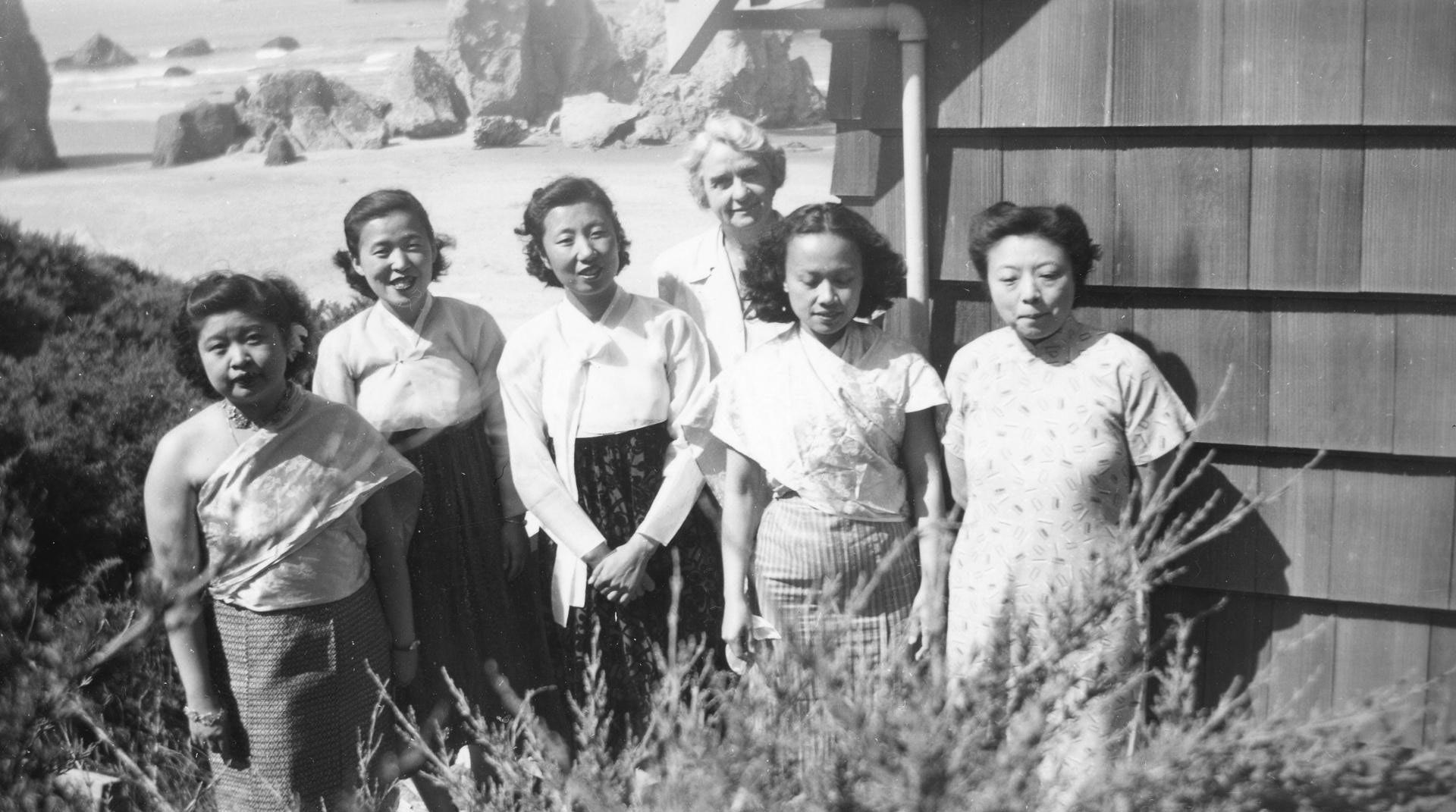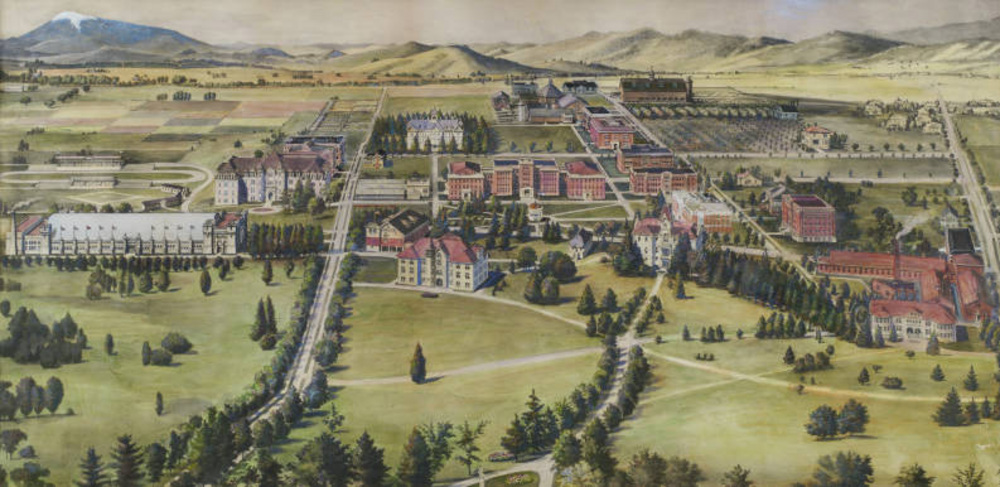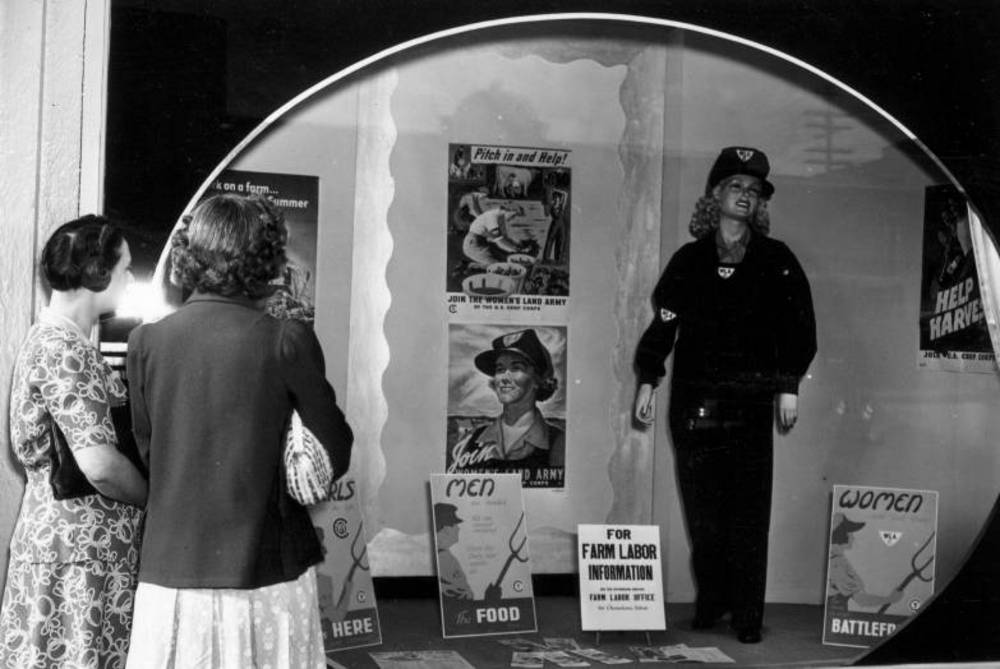Ava Milam Clark, dean of the School of Home Economics at Oregon State University for thirty-three years, helped develop the third largest home economics program in the United States. A pioneering home economist during the first half of the twentieth century, she worked to integrate science into the study of and research on home economics and to expand the field in other countries, especially China.
Ava Milam was born on November 27, 1884, in Macon County, Missouri. At age eighteen, she earned her teaching license and was hired to teach at the Blees Military Academy in Macon. When she told the head of the academy that she hoped to attend the University of Missouri, he suggested that she enroll in the University of Chicago instead. She entered the university in 1906, and it was there that she discovered her passion for domestic science.
After receiving both a bachelor’s (1910) and a master’s degree (1911) and shortly after accepting a teaching position at Iowa State Agricultural College, Milam received a telegram from William Jasper Kerr, the president of Oregon Agricultural College (now Oregon State University). She initially turned down his offer to be an assistant professor of Domestic Science in the School of Home Economics, but Kerr persuaded her to accept by offering her a significantly higher salary than she would receive at Iowa State.
Milam arrived in Corvallis in September 1911, one of three home economics professors. During her first years at the college, she did pioneering work in extending the study of home economics in the state. She wrote bulletins giving women in rural Oregon advice on cooking and other domestic duties and taught extension classes on domestic science and cooking to men and women who could not attend college. In 1915, she traveled to San Francisco for the Panama–Pacific International Exposition, where she planned and organized a tearoom in the Oregon Building. Home economics students ran the room as part of their scientific curriculum to demonstrate the scientific and practical nature of home economics to an international audience.
Milam served as the Home Economics Director for Oregon during World War I. Working under Herbert Hoover's Food Administration, part of her job was to persuade Oregon housewives to conserve clothing and food by teaching them how to use substitutes in their food preparation so more food could be shipped overseas. She was named dean of OAC’s School of Home Economics in 1917.
In 1922, during a two-year sabbatical, Milam traveled to China to establish a home economics program at Yenching University in Beijing. For a year, she studied homes in rural China to understand the culture and people’s domestic needs, and she incorporated the information she gathered into her development of the home economics program. She published her findings in A Study of the Student Homes of China (1930). The experience shaped her work as a home economist, as she created exchange programs for home economics students from China to study at OAC and promote home economics in China, the Philippines, and present-day South Korea. Back in Oregon, she continued to advocate for the inclusion of scientific principles into home economics education, especially through research on food and housing.
After retiring in 1950, Milam was an education agent for the United Nations’ Food and Agriculture Organization in Syria and Iraq, where she taught workshops and helped develop home economics programs at girls’ schools. In 1953, she married J. C. Clark, a YMCA representative who she met in China. The Clarks spent much of their time traveling in North America and promoting their work. J. C. Clark died in 1956. In 1969, Milam Clark published an autobiography, Adventures of a Home Economist, with the assistance of Oregon State University historian J. Kenneth Munford.
Throughout her career, Milam strived to integrate scientific ideas into home economics curriculum and practices, giving women a space to practice science in higher education at a time when they could not earn a degree in most scientific fields. The field of home economics allowed women to apply scientific principles to the home in ways that were directly relevant to their future careers as wives, mothers, and consumers. Through promoting this scientific work and study for women, Milam and other home economists helped create space and opportunities for women to practice science in a way that aligned with contemporary gender roles.
Ava Milam Clark died on August 24, 1976. Following her death, Oregon State University named the Home Economics Building Milam Hall in her honor.
-
![]()
Ava B. Milam (Clark), 1947.
Historical Images of Oregon State University, Oregon State University. Oregon Digital. -
![]()
Ava Milam and foreign exchange Home Economics students at the coast near Bandon, Oregon, 1949..
OSU Special Collections & Archives Research Center, Oregon State University. Oregon Digital. -
![]()
Ava Milam Clark, 1949.
OSU Special Collections & Archives Research Center, Oregon State University. Oregon Digital. -
![Includes Dean Ava Milam, lower left, and Mabel Mack, standing second from left.]()
Home demonstration staff, Oregon State Agricultural College, 1935.
Includes Dean Ava Milam, lower left, and Mabel Mack, standing second from left. Historical Images of Oregon State University, Oregon State University. Oregon Digital. -
![]()
Ava Milam Clark entertaining guests in her office, 1950.
Historical Images of Oregon State University, Oregon State University. Oregon Digital.
Related Entries
-
![Oregon State University]()
Oregon State University
Oregon State University (OSU) traces its roots to 1856, when Corvallis …
-
![William Jasper Kerr (1863–1947)]()
William Jasper Kerr (1863–1947)
When William Jasper Kerr was inaugurated president of Oregon Agricultur…
-
![Women's Land Army]()
Women's Land Army
In 1942, after many men in Oregon had left the workforce to fight in Wo…
Related Historical Records
Map This on the Oregon History WayFinder
The Oregon History Wayfinder is an interactive map that identifies significant places, people, and events in Oregon history.
Further Reading
“Ava B. Milam Hall A Rededication.” Oregon State University, November 6, 1976. Oregon State University Memorabilia Collection, ca. 1860-present. Oregon State University Special Collections and Archives Research Center, Corvallis.
Clark, Ava Milam, and J. Kenneth Munford. Adventures of a Home Economist. Corvallis: Oregon State University Press, 1969.
Hawthorne, Betty E. “Introduction.” In Adventures of a Home Economist, by Ava Milam Clark, v–ix. Corvallis: Oregon State University Press, 1969.
Monroe, Anne Shannon. “Corvallis Girls’ Cookery Makes Big Hit at San Francisco Fair.” The Sunday Oregonian. July 25, 1915.
Munford, J. Kenneth. “Dean Ava Milam Clark...An Early Fighter for Women’s Rights.” Oregon Stater, September 1976. Oregon Digital.
Vecchi, Charlene. “Pioneer Home Economist.” The Oregon Stater, October 1993. Oregon Digital.








